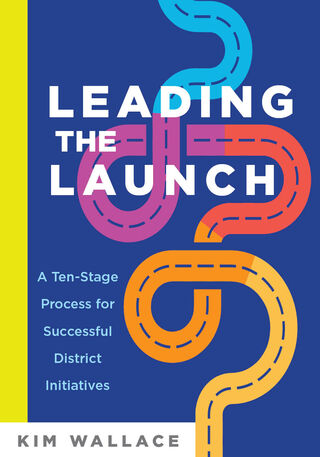Career
Ensuring That School Initiatives Work
Kim Wallace’s new book helps educators successfully launch new initiatives.
Posted January 1, 2022 Reviewed by Vanessa Lancaster
Key points
- At a time when new initiatives most need to succeed, exhausted educators are seeing too many potential solutions slip through their fingers.
- Kim Wallace, former FUSD superintendent, wrote a new book and her process for making the most of organizational change efforts in education.
- Part of Wallace's book delves into eliminating ineffective or outdated programs to make room for systemwide growth.
The COVID pandemic has exacerbated problems schools and districts were already grappling with, added new problems, and left educators and students feeling more overwhelmed than ever. At a time when new initiatives most need to succeed, exhausted educators are seeing too many potential solutions slip through their fingers. Kim Wallace is focused on changing this.
I had the pleasure of meeting Wallace at the recent California Educational Research Association (CERA) Conference, where I learned about her new book, Leading the Launch: A Ten-Stage Process for Successful District Initiatives.
Wallace formerly served as superintendent of one of the largest school districts in California. She is now the associate director of the 21CSLA (California School Leadership Academy) State Center at the UC Berkeley School of Education and consults through Process Makes Perfect. I interviewed Wallace on her new book and her process for making the most of organizational change efforts.
Jenny Rankin (JR): You created a system to regulate programs, protocols, and adoptions. Can you describe that for us?
Kim Wallace (KW): Anyone who has worked in the field of education for some time has seen new initiatives come and go. As leadership, policies, or conditions shift, educators often brace themselves for some fresh “flavor of the month” while waiting for “this too, to pass.”
During the pandemic, this phenomenon skyrocketed as we collectively faced the unknown and unknowable on a daily basis. Even a decade ago, however, when I became an Assistant Superintendent, I inherited a department overflowing with initiatives; most of them (while well-intentioned) were flailing or failing.
I felt it was our professional duty to conserve our publicly-funded limited resources, make good on promises to teachers and students, and instill trust within the community.
As such, I created a system to regulate the programs, protocols, and adoptions in my department–and eventually districtwide, when I became superintendent. My personal and professional mission became helping leaders (re)claim their power to transform our educational system from the inside out.
JR: I love how your system ties very directly with our professional duty. What are the ten steps of your process to help schools and districts successfully spearhead new initiatives?
KW: The ten stages are clustered into three domains. The first three stages outline the initial steps of researching and vetting the idea, pitching the proposal, and determining its placement and prioritization in the overall scheme of a school or district.
The next three stages contain the key ingredients for designing the proof of concept, prototype, and pilot, building stakeholder engagement; and gathering and analyzing data.
After the first six stages of the new initiative process are complete, stage seven tackles the “to be or not to be” culminating decision to push the plan forward, slow it down, or shelve it.
Once a proposal is approved, the final three stages are put into motion, including planning and delivering professional development, rolling out the implementation, and providing ongoing support.
JR: That really makes sense and shows a lot of sensitivity to the ways people and movements operate. How does a school or department overflowing with initiatives determine what to keep, modify, or drop?
KW: Adding without taking away compounds the original dilemma of initiative overload, so educators must be willing to critically assess the existing programs, policies, and practices in their organization.
To help districts and schools balance and sustain their most impactful initiatives, the final chapter of the book delves into eliminating ineffective or outdated programs to make room for systemwide growth. It’s akin to a horticultural pruning process, where limbs and branches are trimmed back to allow the tree to grow even stronger and more robust for the long term.
JR: That’s a great analogy. Your new book and 12-hour action-learning series, Leading the Launch, includes added resources like action plans and checklists. Can you describe some of these?

KW: Leading the Launch is a book and learning series by a practitioner for practitioners. Having been an educator for 27 years, I know that leaders’ time is invaluable yet quite limited. Therefore, I include dozens of ready-to-use strategies, tools, action plans, and checklists to help educational leaders launch, guide, and sustain implementations in their own unique settings. Here is a free resource that includes action steps for each stage in the process.
JR: Thanks for that helpful resource. Do you have any final thoughts for our readers?
KW: I want to encourage educators that spending time on the front end will save uncountable hours on the back end simply by introducing and infusing initiatives into their organization with a step-by-step plan for enduring success. The good news is, it can be done. The imperative is, it must be done to build better schools for students, families, and staff–today and tomorrow.




